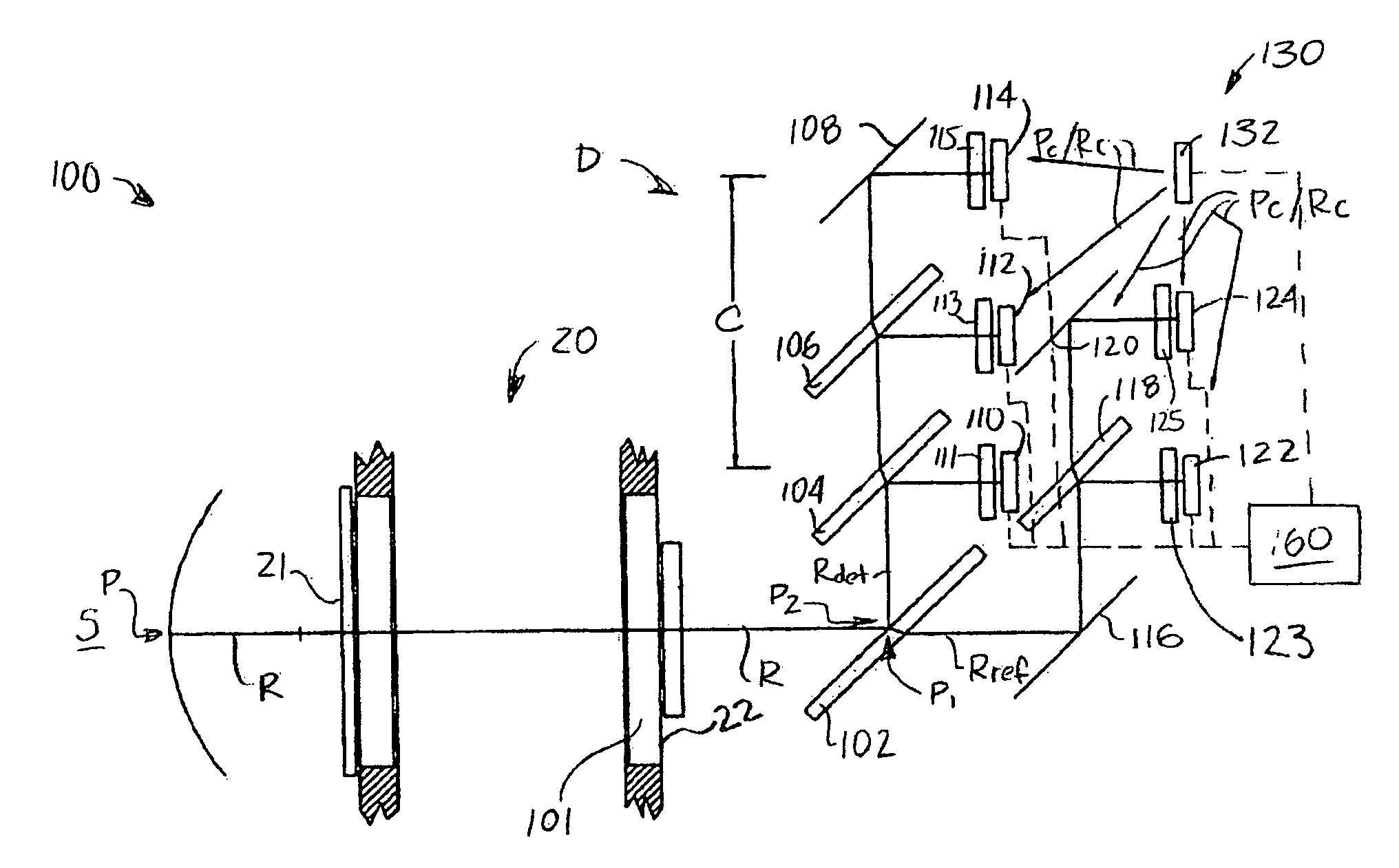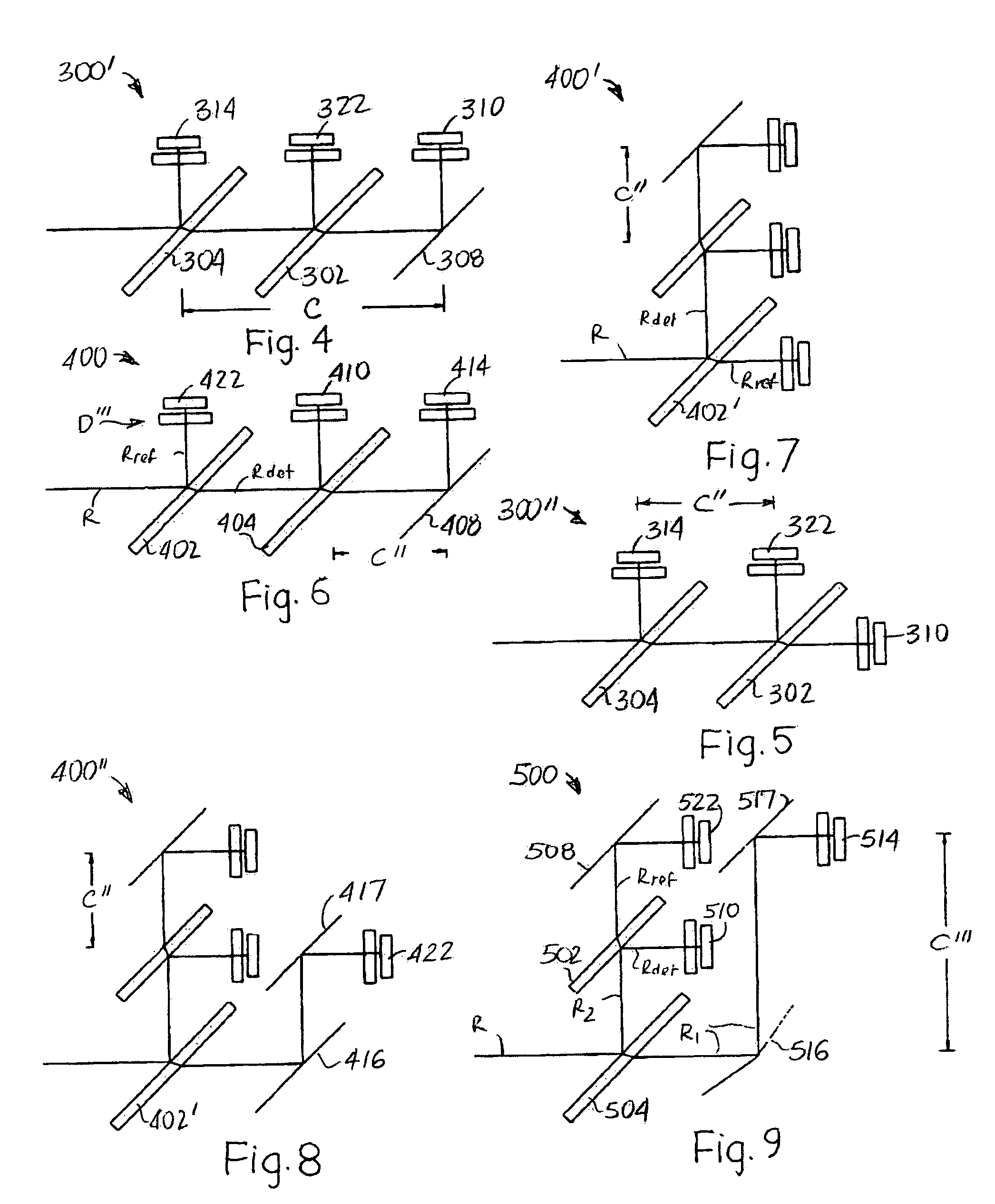Ambient gas compensation in an optical system
a technology of optical system and ambient environment, applied in the field of optical sensing techniques and apparatuses, can solve the problems of eliminating the material of interest, existing technologies do not account for the possibility of the presence of a material of interest in the ambient environment around or within the monitor,
- Summary
- Abstract
- Description
- Claims
- Application Information
AI Technical Summary
Benefits of technology
Problems solved by technology
Method used
Image
Examples
Embodiment Construction
[0019]FIG. 1 illustrates a first example of an embodiment of optical sensor 100 that incorporates teachings of the present invention. Optical sensor 100 includes a source S of electromagnetic radiation, which is configured to be positioned on one side 21 of a sample cuvette 20, as well as a detection system D configured to be positioned on another (e.g., the opposite) side 22 of sample cuvette 20. Optical sensor 100 may be used to detect one or more gaseous or vapor components of a sample. By way of nonlimiting example, optical sensor 100 may be configured to monitor carbon dioxide and nitrous oxide in a respiratory sample.
[0020]When optical sensor 100 is configured for monitoring carbon dioxide, nitrous oxide, or other materials that attenuate electromagnetic radiation in the infrared portion of the spectrum, source S may comprise a source of electromagnetic radiation R of one or more infrared wavelengths. Radiation R is emitted along a path P, which extends from source S to detect...
PUM
 Login to View More
Login to View More Abstract
Description
Claims
Application Information
 Login to View More
Login to View More - R&D
- Intellectual Property
- Life Sciences
- Materials
- Tech Scout
- Unparalleled Data Quality
- Higher Quality Content
- 60% Fewer Hallucinations
Browse by: Latest US Patents, China's latest patents, Technical Efficacy Thesaurus, Application Domain, Technology Topic, Popular Technical Reports.
© 2025 PatSnap. All rights reserved.Legal|Privacy policy|Modern Slavery Act Transparency Statement|Sitemap|About US| Contact US: help@patsnap.com



